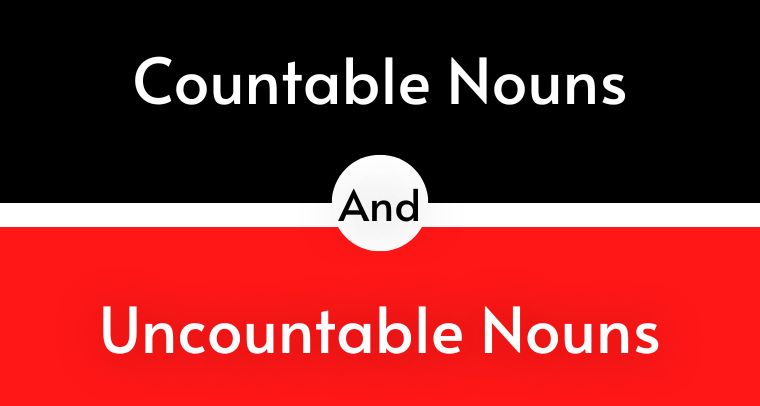In English, there are two types of nouns: countable and uncountable. Countable nouns are those that can be counted, like “One book, two books, three books.” Uncountable nouns cannot be counted, like “water, air, furniture.”
Countable Nouns
Countable nouns are things that can be counted, like “an apple,” “person,” or “table.” When you’re talking about countable nouns, you have to use a number with them. For example, you could say “I have three apples” or “There are ten people in my family.” You can’t say “I have an apple” or ” there is a person in my family.”
Uncountable Nouns
Uncountable nouns are things that can’t be counted, like “water,” “air,” or “sand.” One way to tell if a noun is countable or uncountable is to try to put a number in front of it. If you can say “two glasses of water” or “three breaths of air,” then the noun is countable. If you can’t, then it’s uncountable.
The Difference Between Countable and Uncountable Nouns
There is a big difference between countable and uncountable nouns in English. Countable nouns are things that can be counted, like “an apple,” “two cats,” or “three buildings.” Uncountable nouns are things that can’t be counted, like “sand,” “water,” or “air.”
Most countable nouns can be made into plural forms, like “apples,” “cats,” or “buildings.” But uncountable nouns usually can’t be pluralized, like “sand,” “water,” or “air.” You can’t say “sands,” “waters,” or “airs.”
When using countable nouns, you can use either the singular or plural form. However, with uncountable nouns, you can only use the singular form. For example, you would say “I have a lot of work to do” (singular).
Examples of countable and uncountable nouns
Here are some examples of countable and uncountable nouns:
- Countable Nouns: apple, dog, cat, person, table, chair
- Uncountable Nouns: water, air, sand, coffee, milk
The Importance of Context
When learning English, it is important to understand the difference between countable and uncountable nouns. This distinction can be confusing for native speakers of some languages, as the same word may be used for both types of nouns in those languages. However, in English, the context in which a noun is used will determine whether it is countable or uncountable.
Countable nouns are those that can be individually counted. They usually have a singular and plural form, and they can be used with the indefinite article “a” or “an”. Uncountable nouns cannot be individually counted and usually only have a singular form. They cannot be used with the indefinite article “a” or “an”.
Conclusion
It is important to be able to identify countable and uncountable nouns in order to properly use them in sentences. Depending on the context, one type of noun might be more appropriate than the other.
There is a big difference between countable and uncountable nouns. Countable nouns are those that can be counted, like “One apple,” “Two dogs,” etc. Uncountable nouns, on the other hand, cannot be counted and usually refer to things that are considered a whole, like “water” or “sand.” Depending on the context, one type of noun might be more appropriate than the other. For example, it would not make sense to say “I have two waters” because water is an uncountable noun. However, you could say “I have two glasses of water.”

